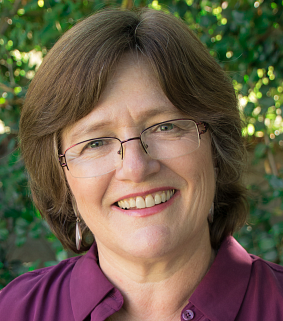Dr. Lucy Jones is the founder of the Dr. Lucy Jones Center for Science and Society, with a mission to foster the understanding and application of scientific information in the creation of more resilient communities. She is also a research associate at the Seismological Laboratory of Caltech, a post she has held since 1984. Working with both the public and private sectors, Dr. Jones seeks to increase communities’ ability to adapt and be resilient to the dynamic changes of the world around them. The aim is to understand and communicate where the greatest vulnerabilities lie and what actions can be taken to reduce the risk that are the most cost-effective.
With a BA in Chinese Language and Literature from Brown University and a Ph.D. in Geophysics from MIT, Dr. Jones has been active in earthquake research for decades, furthering earthquake risk reduction through seismological research and integrated disaster scenarios. Dr. Jones completed 33 years of federal service with the US Geological Survey in March 2016. Most recently, she was the USGS Science Advisor for Risk Reduction, leading the USGS’s long-term science planning for natural hazards research, and the SAFRR Project: Science Application for Risk Reduction that she had created to apply USGS science to reduce risk in communities across the nation. In this role, she led the development of the American major earthquake drill, the Great ShakeOut, which included 63 million participants worldwide in 2018. She also led the creation of a national science strategy for all the natural hazards studied by the USGS to promote the science that would better prepare the nation for future natural hazards and the development of science products that would make the information more accessible to decision makers.
She has been one of the prominent public voices for earthquake resilience, conducting thousands of media interviews and appearing on most major news programs as well as NPR, PBS, and numerous TV specials about earthquakes and disasters. Dr. Jones began her career researching approaches to earthquake prediction using earthquake clustering and went on to write over 100 published papers on statistical seismology and integrated disaster scenarios. In 1979 while a graduate student at MIT, she was chosen to be in the first American scientist to go to China after normalization of relations as a Fulbright Fellow. Her research into earthquake occurrence probability and the short-term probability of foreshock and aftershock sequences created methodologies for assessing earthquake probability that have been the basis for all earthquake advisories issued by the State of California. She served on the California Earthquake Prediction Evaluation Council from 2003 to 2015 and was appointed by the Governor of California to the California Seismic Safety Commission from 2002 to 2009. Her pioneering science was recognized with the Samuel J. Heyman Service to America Medal (one of just eight awarded to federal employees in 2015), the Ambassador Award from the American Geophysical Union, the William Rodgers Distinguished Alumni Award from Brown University, the Lifetime Achievement Award from the Western States Seismic Policy Council, and the 2017 Distinguished Lecture Award of the Earthquake Engineering Research Institute.

